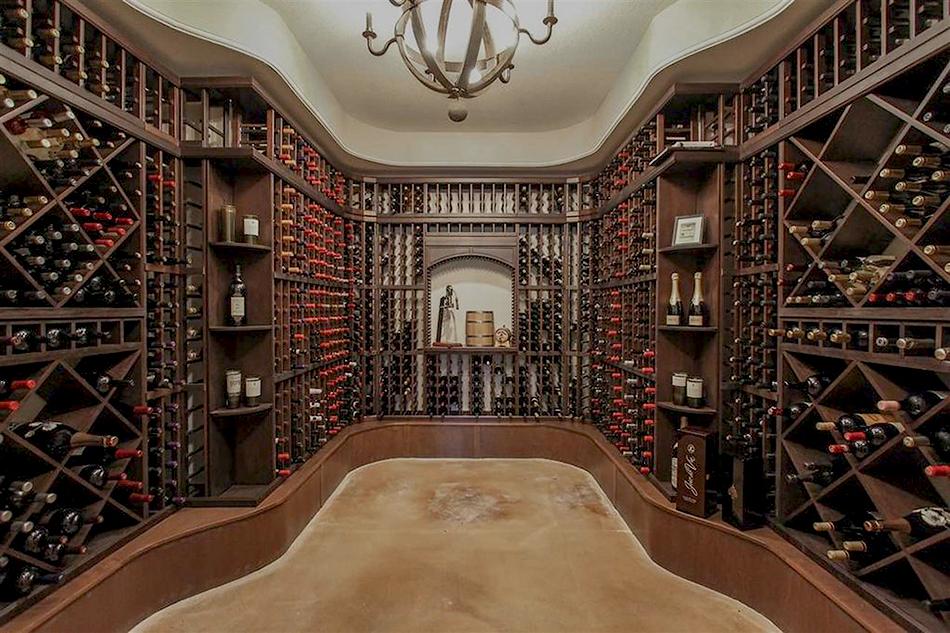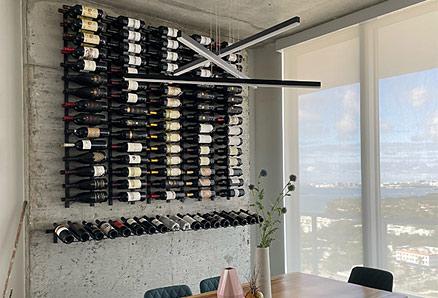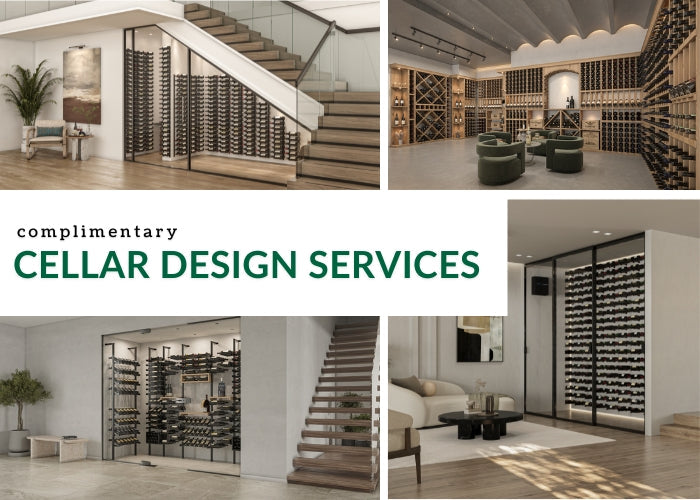A Beginner’s Guide to Collecting Wine: Everything You Need to Know
Collecting wine is both an excellent investment and an extremely rewarding hobby.
From laying down your favorite vintages to watching them improve in flavor (and value) over time, wine collecting is a rare hobby that pays for itself in both money and enjoyment—and the earlier you start, the better.
In this guide, we’ll review how to start a wine collection of your very own, as well as some of the key benefits and helpful tips for securing your investment. But first, let’s review some great reasons why you should consider collecting wine in the first place.
Why Collect Wine?
Though everyone collects wine for a different reason, the benefits are all the same. Between enjoying amazing vintages and making a proven investment, there’s many reasons you might want to collect wine.
It’s a proven asset
Even the most ardent teetotaler can recognize that wine is an excellent long-term asset.
Over the past 30 years, wine has shown a steady compound annual growth rate of approximately 10 percent. With increasing demand and limited (if not decreasing) supply, values are only expected to increase over time and remain independent of the market.
While return rates can vary depending on vintage, it’s safe to assume that wine is a remarkably stable asset with the right knowledge and planning. Plus, offering better returns than even the most successful stock portfolios, it’s also a valuable supplement to any retirement fund.
Drink better wine for less
If you’ve ever tried to purchase a truly “vintage” vintage—say, at least 10-20 years old—then you know how expensive it can be. But what if you didn’t have to pay several hundred (if not several thousand) dollars for a properly matured vintage?
It’s possible with the right foresight and investment. Even the most modest Bordeaux can achieve remarkable complexity after only a decade in the cellar. Plus, most young vintages fetch a very modest price, allowing you to drink otherwise expensive wines at a fraction of the cost. The only real investment becomes your patience.
Enjoy unique vintages as they age
It’s one thing to enjoy a single bottle of a certain vintage—it’s another to enjoy a case spread out over several years.
Under the right wine storage conditions, many wines undergo complex changes in their flavor, aroma, and texture. While it’s perfectly acceptable to wait until a wine is fully matured to enjoy it, many wine lovers enjoy the experience of tasting a good wine as it progresses to maturity.
For example, you might buy one or two cases of a particular wine, cellar it, and enjoy a bottle once every couple of years to see its progression in flavor. This experience is invaluable to anyone who loves wine, especially those who want to assess the early stages of aging so they can make future investments.
Some wines are disappearing
Climate change is already impacting traditional wine regions, with many now unable to support their traditional crops and yields. For example, many vintners in California have switched to producing raisins due to rising temperatures.
As a result, many traditional wine regions—and the valuable wines they produce—are slowly starting to disappear. For many wine lovers, this scenario has been a call to urgency to “stock up” on their favorite vintages while they last.
It’s not all bad news, however. As many traditional regions struggle, new regions are emerging. For example, England is quickly becoming a desirable growing region, building off an existing success in sparkling wines.
7 Essential Tips for Collecting Wine

While there’s no right or wrong way to collect wine, following these tips can help you make the most of your collection.
1. Start small
Many new wine collectors think they need to already have “enough” wine to start collecting—and that’s simply not the case.
If anything, it’s actually better to start small. By taking time to explore the vintages you like and see how the wine ages over a few years, you’ll gradually become better at sniffing out the most promising wines for long-term storage. It’s also far more cost-effective than buying a collection upfront.
By contrast, waiting until you have a big enough collection comes with many pitfalls. Not only will you be waiting for years (or spend a lot of money upfront), but you’ll also be keeping your existing collection from proper storage in the interim.
2. Focus on what you like
Perhaps except for a few choice investments, you should focus your collection on wine you actually like to drink.
That might seem obvious, but many people who over invest in wine they don’t like often find themselves unsatisfied with their collections—and buying the fine wine they do like from the store like everyone else.
If you enjoy wine, your wine cellar should be something you can truly enjoy and not just an investment. By investing in wines you know and love, you’ll also make better investments than you would otherwise, all the while enjoy great wine.
3. Visit your vintners
Though it’s certainly not necessary, visiting wine makers and wine regions is an excellent way to familiarize yourself with what you like and the terroirs they come from.
Meeting with vintners also gives you valuable insight into the quality of the wines you’re purchasing, as well as intimate knowledge of the wine itself. These personal connections can sometimes give wine an “intrinsic value” that not only makes it more enjoyable to drink, but also more valuable at auction.
4. Collect a variety of wine
Even if you’re partial to a handful of wines or grape varieties, it’s still important to diversify your cellar just as you would diversify your stock portfolio.
While “diversity” in wine is subjective, your collection should at least include several different regions and a range of vintages. For your own enjoyment, you should also consider cellaring some wines for short periods, such as 1-5 years.
5. Research past vintages before buying
Many long-standing vintners and growing regions also have long-standing track records. With that comes a myriad of information that can be useful for assessing aging potential and future value.
For example, Bordeaux vintages over the past several decades have demonstrated a trend where years ending with “0” or “5” tend to be exceptionally good. Though that may be sheer coincidence, it’s a great example of how long-term trends can help guide purchasing decisions.
6. Save purchase receipts and keep documentation
Like with all collectibles, authenticity and documentation are incredibly important. Beyond keeping the purchase receipts, be sure to save as many other documents as possible.
Examples might include the original auction brochure, the business card of whoever sold it to you, and so on. You should also consider including a dated personal note detailing your initial thoughts on the wine, as well as anything special about it. After all, wouldn’t you want a future buyer to know that otherwise unassuming bottle of Burgundy came from the cellar of Versailles?
7. Get your collection regularly appraised
Though wine is a great investment, its values can fluctuate widely over the years—for better or for worse. As a result, you should regularly have your collection appraised, especially in the event of big changes or accidents (e.g., your cellar flooded).
Appraisals are also necessary for securing the right insurance and, in some cases, selling at auction houses.
Cellaring and Storage

Whether you have one case or twenty (or even more), wine collections of all sizes need proper storage to properly appreciate in value.
Though you can sometimes rent cellar storage space from third parties, it’s usually better to build your own. In doing so, you’ll be able to keep a closer eye on your collection and, of course, readily enjoy it.
Temperature and humidity
Wines require a specific combination of temperature and humidity to age properly and reduce the risk of spoilage. However you store your wine, make sure you meet these requirements.
- Store wine between 50 and 59 degrees Fahrenheit, or ideally 55 degrees. Though wine stored slightly outside of this range won’t be harmed, temperatures above 70 can “cook” the wine, while those below 40 can dry out corks and lead to spoilage.
- Maintain a relative humidity of at least 75 percent. However, unless you live in an especially dry climate, a humidity outside this range isn’t likely to dry out corks or cause other damage. Even so, it’s still a safe bet, especially if you plan to age bottles for more than 10 years.
A wine cellar cooling unit is the best way to maintain these conditions. Many also have built-in monitors that make it easy to track and set temperature and humidity levels.
Shelving

All bottles should be stored laying down (horizontally) so that the wine inside is always in contact with the cork. This helps prevent the cork from drying out and letting air in, which will oxidize and spoil the wine.
Horizontal storage is also the most stable and space-efficient option. As a result, your wine cellar should be well-equipped with metal or wood wine racks. The right rack will also allow plenty of air to circulate between the bottles, which helps maintain consistent temperature and humidity.
Other considerations
Beyond storing your bottles horizontally, you should also do everything you can to minimize movement and vibrations. Old wines usually have natural sediment which settles at the bottom of the bottle over time. Disturbing the wine can kick up this sediment, interfering with both drinking quality and aging.

Another important consideration is cellar size. While wine cellars come in all shapes and sizes, you should allow slightly more space than you think you’ll need (pending your budget, of course). Our wine cellar design service can help you determine the right size for you.
Build the Perfect Cellar With Wine Racks America
Ready to get started on your wine collecting journey? The Wine Racks America team is ready to help. With our custom cellar design services, we’ll work with you to develop a complete design, choose materials, and build, ship, and install it on premises.
For more information, call one of our cellar design experts at 888-373-6057.









